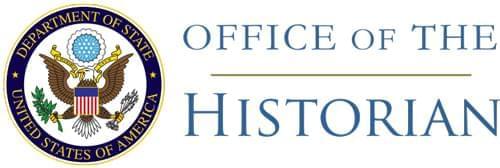13. National Security Decision Memorandum 131
TO
- The Secretary of State
- The Secretary of Defense
- The Secretary of the Treasury
- The Director of Central Intelligence
SUBJECT
- Policy Toward Japan
As a result of the NSC meetings on Japan,2 the President has made the following decisions with regard to U.S. policy toward Japan:
1. We shall basically pursue our current relationship with Japan as our major partner in Asia, seeking ways to improve this relationship from the viewpoint of U.S. national interests and to seek an increasingly larger Japanese role in Asia.
2. We shall allow the present Treaty of Mutual Cooperation and Security to continue without amendment after 1970 when it becomes subject to renunciation or amendment.
[Page 53]3. We shall continue to make gradual alterations in our base structure and base utilization in Japan to reduce major irritants while retaining essential base functions.
4. We shall continue our present policy of encouraging moderate increases and qualitative improvement in Japan’s defense efforts, while avoiding any pressure on her to develop substantially larger forces or to play a larger regional security role.
With respect to Okinawa, the President has directed that a strategy paper be prepared by the East Asia Interdepartmental Group under the supervision of the Under Secretaries Committee3 for negotiations with the Japanese Government over the next few months on the basis of the following elements:
1. Our willingness to agree to reversion in 1972 provided there is agreement in 1969 on the essential elements governing U.S. military use and provided detailed negotiations are completed at that time.
2. Our desire for maximum free conventional use of the military bases, particularly with respect to Korea, Taiwan and Vietnam.
3. Our desire to retain nuclear weapons on Okinawa, but indicating that the President is prepared to consider, at the final stages of negotiation, the withdrawal of the weapons while retaining emergency storage and transit rights, if other elements of the Okinawan agreement are satisfactory.4
[Page 54]4. Other commitments to be sought from Japan with respect to Okinawa.5
- Source: National Archives, Nixon Presidential Materials, NSC Files, NSC Institutional Files (H-Files), Box H–210, National Security Council Decision Memoranda, NSDM 13. Top Secret. On May 23 Sneider informed Kissinger that both the leadership of the Department of Defense and the JCS “were satisfied with the draft Decision Memorandum with one change assigning specific action on the negotiating strategy paper to the EA/IG and the Under Secretaries Committee.” (Memorandum from Sneider to Kissinger, May 23; ibid.) On May 24 Kissinger sent this decision memorandum to Nixon for his approval, under a covering memorandum that discussed U.S. strategy during the Okinawa negotiations. Kissinger noted that the various Departments have “no basic disagreement” with NSDM 13. Nixon initialed his approval of NSDM 13 on May 28, and returned it to the NSC the same day. (Memorandum from Kissinger to Nixon, May 24; ibid.)↩
- For information on the NSC meetings of April 30 and May 7, see Documents 9 and 11.↩
- The Under Secretaries Committee issued the draft strategy paper on June 29. (National Archives, Nixon Presidential Materials, NSC Files, NSC Institutional Files (H-Files), Box H–210, National Security Council Decision Memoranda, NSDM 13) In a July 1, memorandum Sneider described the paper to Kissinger: “The key aspect of the strategy is to withhold any Presidential decision on nuclear storage until other aspects of the Okinawan package are acceptable to us.” (Ibid.)↩
- On June 3, Hedrick Smith of the New York Times wrote an article that discussed what the U.S. bargaining position would be during the upcoming negotiations concerning Okinawa. This information appeared to be based on NSDM 13 and led to an investigation into the source of the leak. The transcript from a June 3 Department of State briefing at which this article was discussed is in ibid., RG 59, Central Files 1967–69, POL 19 RYU IS. Top officials, such as Kissinger and U. Alexis Johnson, believed that Smith’s article threatened to undermine the Okinawa negotiations, particularly through its assertion that the Nixon administration was willing to consider withdrawing nuclear weapons from the island. Secretary of State Rogers, who happened to be meeting with Japanese Foreign Minister Aichi on the day that the article appeared, denied its accuracy. (Memorandum of conversation, June 3; ibid., POL 7 Japan) On June 4, Under Secretary Richardson reported to the President on the State investigation of the leak. (Ibid., Nixon Presidential Materials, NSC Files, Box 280, Agency Files, Department of State, 6/1/69 Vol. III) Laird wrote a letter to Haldeman on the Pentagon’s investigation. (Washington National Records Center, OSD Files: FRC 330–75–0089, Box 81, Okinawa, 323.3) Both Kissinger and Nixon describe the leak in their memoirs. See Kissinger White House Years, p. 329, and Nixon, RN: The Memoirs of Richard Nixon, p. 389.↩
- According to a May 16 memorandum from Haig to Kissinger, Haig was unhappy with the earlier draft of the NSDM. Haig worried that the Joint Chiefs of Staff were dissatisfied with proposals for weapons storage after the reversion of Okinawa. He also perceived a problem “with the final paragraph in which the President is quoted as using security interests on Okinawa to develop leverage on trade issues. As a matter of principle, this should never be carved in stone for historians to examine. More importantly, since he is talking about textiles and since he may at some future date have some problems with his decision in this area because of political affiliation, I would strongly recommend that the last paragraph not be included in the decision memorandum. In any event, I think it is very important that the President not refer in any form to the linkage between Okinawa and trade.” The paragraph was subsequently deleted. (National Archives, Nixon Presidential Materials, NSC Files, NSC Institutional Files (H-Files), Box H–128, National Security Study Memoranda, NSSM 5 [1 of 2])↩
